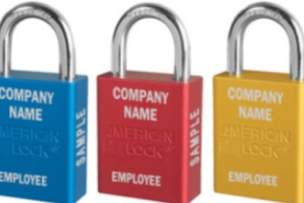A new standard from the International Organization for Standardization takes a global approach to occupational health and safety management.
What You Need to Know
ISO 45001 is the next step in the evolution of safety: a global occupational health and safety standard. Get to know why it’s become a new standard.
As work-related injuries, diseases and fatalities amass on a global scale, international standards bodies are doing everything they can to help influence positive safety practices worldwide. ISO 45001, a new worldwide occupational health and safety (OHS) standard from the International Organization for Standardization (IOS), is the first OHS standard to be recognized globally. It seeks to create safer workplaces in part by putting a great emphasis on worker and top management participation in safety.
“It has been designed to reduce confusion and fragmentation across global markets, by enabling the same criteria to be used by organizations worldwide,” writes Lloyd’s Register. “The high-level structure is the same as the quality and environmental management systems standards, ISO 9001:2015 and ISO 14001:2015–which will make it easier to integrate.”
“ISO 45001: Occupational health and safety management systems – Requirements with guidance for use,” also known as ISO 45001: 2018, was formally adopted in March. Companies formerly using the OHSAS 18001 standard have up to three years to migrate to use of the new standard.
Here are a few important things to know about ISO 45001.
ISO 45001 Makes Worker Participation a Priority
“One of the most important changes to ISO 45001 is that it requires organizations to consult and participate with workers or their representatives,” says Zoë Frances, product marketing director at VelocityEHS, a management software company. “In the past, management systems have often been the domain of a select few, with program documents existing on only a few computers within corporate EHS.”
In contrast, she says, ISO 45001 requires companies to consult with non-managerial workers and to identify and remove barriers to their participation. “Any organization seeking certification to ISO 45001 will need to have a healthy and engaged EHS culture,” Frances says.
Leadership also plays a vital role, says Elizabeth Gasiorowski-Denis, editor in chief of ISOfocus.
“Top management must take an active role, promote a positive culture and communicate what needs to be done and, more to the point, why it’s important,” she says. “Senior leaders need to demonstrate that they are actively involved and taking steps to integrate the OHS management system into the overall business processes.”
The new structure means communication and documentation take on increased significance, finds NQA, an accredited registrar for ISO certifications. The organization writes:
“All staff must now be aware of their responsibilities, and work together to meet health and safety goals. To facilitate this, organizations will need to set aside adequate resources for worker participation and training on things such as incident reporting, investigations, risk assessment and other tasks that were the exclusive domain of management under the old system.”
There is an art to balancing worker safety and avoiding costly compliance fines. Learn more in the article “OSHA Vs. ANSI: How to Up Your Safety Compliance Game.”
ISO 45001 vs. OSHAS 18001: A Completely New Safety Standard
Though ISO 45001 replaces OHSAS 18001, the former benchmark for occupational health and safety, it is not a revision or update, but is a new and distinct standard, according to Kristian Glaesel, convenor of the working group that developed the new standard, and Charles Corrie, secretary of ISO/PC 283.
The main difference between the two standards, Glaesel and Corrie told ISO, the International Organization for Standardization, is that “ISO 45001 concentrates on the interaction between an organization and its business environment, while OHSAS 18001 was focused on managing OH&S hazards and other internal issues.”
ISO 45001 is also process-based versus procedure-based, considers opportunities as well as risks, and includes the views of all interested parties (all the individuals and organizations that can affect your business activities).
“OH&S is no longer treated as a ‘stand-alone,’ but must be viewed within the perspective of running a sound and sustainable organization,” say Glaesel and Corrie.
“OHS–as framed by ISO 45001–is not something that just corporate EHS does, but something the company needs to do as a whole.”
ISO 45001 Requires Companies to Integrate OHS As a Whole
Frances says ISO 45001’s focus on opportunities as well as risks requires organizations to be more proactive in their approach. She also notes that ISO 45001 requires occupational health and safety to be more integrated into an organization’s identity.
“Designed to integrate easily with other management systems, like ISO 14001, OHS is no longer separate from everything else an organization does,” Frances says. “For instance, Section 5.1 requires top management to take ‘overall responsibility and accountability’ for OH&S activities. Similarly, the standard’s Introduction identifies integration of the OHS management system with organizational business factors as a ‘success factor.’ In short, OHS–as framed by ISO 45001–is not something that just corporate EHS does, but something the company needs to do as a whole.”
Gasiorowski-Denis says that ISO 45001’s high-level structure, with its similarities to other ISO management system standards, will help companies’ efficiency. “This will make it easier for organizations, if they so wish, to integrate their related systems, either partially or fully, with each other–so, for example, quality, environment or security with health and safety.”
Glaesel and Corrie call the new standard a milestone that “offers a single, clear framework for all organizations wishing to improve their OH&S performance.”
“Directed at the top management of an organization, it aims to provide a safe and healthy workplace for employees and visitors,” Glaesel and Corrie say. “To achieve this, it is crucial to control all factors that might result in illness, injury, and in extreme cases death, by mitigating adverse effects on the physical, mental and cognitive condition of a person–and ISO 45001 covers all of those aspects.”
Will ISO 45001: 2018 change how your organization manages its safety practices?





Talk to Us!
Leave a reply
Your email address will not be published. Required fields are marked *